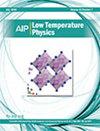多配体同时对接揭示的抗病毒药物和鏻荧光染料与蛋白质的相互作用
IF 0.8
4区 物理与天体物理
Q4 PHYSICS, APPLIED
引用次数: 0
摘要
本研究采用了多配体同时对接技术来探索开发基于蛋白质的纳米载体的可行性,其中治疗剂(抗病毒药物)将与可视剂(鏻染料 TDV)相结合。通过改变所研究复合物中的蛋白质(血清白蛋白、溶菌酶、细胞色素 c、胰岛素)和抗病毒药物(法非拉韦、莫鲁拉韦、奈伐韦、利托那韦)成分,证明在含白蛋白和细胞色素 c 的系统中,TDV 和抗病毒染料在蛋白质分子上占据不同的结合位点,互不干扰。研究发现,TDV 与抗病毒药剂位于同一胰岛素腔内的倾向可能会阻碍药物从纳米载体中释放。我们的研究结果表明,以血清白蛋白为基础,可以建立能量最稳定的蛋白质-药物-TDV 系统,用于开发含有抗病毒药物的蛋白质纳米载体。本文章由计算机程序翻译,如有差异,请以英文原文为准。
The interactions of antiviral drugs and a phosphonium fluorescent dye with proteins as revealed by a multiple ligand simultaneous docking
In the present study, the multiple ligands simultaneous docking technique was employed to explore the feasibility of developing the protein-based nanocarriers in which the therapeutic agents (antiviral drugs) will be combined with a visualizing agent (the phosphonium dye TDV). By varying both the protein (serum albumin, lyso-zyme, cytochrome c, insulin) and antiviral agent (favipiravir, molnupiravir, nirmatrelvir, ritonavir) components of the examined complexes it was demonstrated that in the albumin- and cytochrome c-containing systems the TDV and antiviral dyes occupy distinct binding sites on the protein molecule, exhibiting no interference with each other. It was found that the TDV propensity to reside within the same insulin cavity as the antiviral agent might hinder the drug’s release from the nanocarrier. Our results indicate that the most promising energetically stable protein-drug-TDV systems for developing protein-based nanocarriers with the examined antiviral drugs can be created on a basis of serum albumin.
求助全文
通过发布文献求助,成功后即可免费获取论文全文。
去求助
来源期刊

Low Temperature Physics
物理-物理:应用
CiteScore
1.20
自引率
25.00%
发文量
138
审稿时长
3 months
期刊介绍:
Guided by an international editorial board, Low Temperature Physics (LTP) communicates the results of important experimental and theoretical studies conducted at low temperatures. LTP offers key work in such areas as superconductivity, magnetism, lattice dynamics, quantum liquids and crystals, cryocrystals, low-dimensional and disordered systems, electronic properties of normal metals and alloys, and critical phenomena. The journal publishes original articles on new experimental and theoretical results as well as review articles, brief communications, memoirs, and biographies.
Low Temperature Physics, a translation of the copyrighted Journal FIZIKA NIZKIKH TEMPERATUR, is a monthly journal containing English reports of current research in the field of the low temperature physics. The translation began with the 1975 issues. One volume is published annually beginning with the January issues.
 求助内容:
求助内容: 应助结果提醒方式:
应助结果提醒方式:


